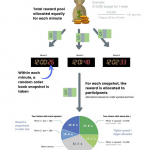Stablecoins are growing so fast that regulators are starting to worry about their potential to undermine traditional bank lending.
So this week, researchers at the Federal Reserve Bank of New York published an academic-style study in which they tried to estimate the impact on bank lending under three different regulatory frameworks for stablecoins.
According to the researchers, the circulating supply of stablecoins jumped fivefold to nearly $130 billion as of September. (The amount has since grown to at least $155 billion, according to data from Skew.)
“If stablecoins were to see broad adoption throughout the financial system, they could have a significant impact on the balance sheets of financial institutions,” the New York Fed researchers wrote.
“With appropriate safeguards and regulations, stablecoins have the potential to provide a level of stability that is on par with traditional forms of safe value,” the paper stated.
The researchers set out to “analyze several plausible scenarios in which reserve-backed stablecoins see widespread adoption in the financial system.”
Here are those scenarios:
Scenario 1: “Narrow bank”
Under this framework for stablecoins, physical cash would be tokenized and issuers would be required to back their stablecoins with central bank reserves.
The impact on bank lending – the researchers used the terms “credit provision” and “credit intermediation” – would largely be minimal. When it comes to deposits, however, this framework could have a negative impact because the deposit-backed funding for lending would be reduced as regular commercial bank deposits would move to separated accounts at the central bank.
“A narrow banking framework … minimizes the risk of ‘runs’ on stablecoins but can potentially reduce credit intermediation,” the paper stated.
Because the stablecoins would effectively act like a pass-through central bank digital currency, their pegs – fixing the price to $1, for example – would come with guaranteed stability. In times of financial panic, however, large migrations of regular commercial bank deposits into narrow bank stablecoins could disrupt lending and could increase the Fed’s balance sheet to accommodate the demand from stablecoin issuers.
Scenario 2: Two-tiered intermediation
In this scenario, stablecoins would be backed by deposits held at commercial banks. And then the banks could lend the stablecoins to new borrowers. For this to work, the treatment of stablecoin deposits would have to be the same as that for non-stablecoin deposits when it comes to regulatory limits.
Contrary to the narrow-bank approach, large inflows into stablecoins could have a positive impact on lending, while the overall balance sheets and asset holdings of commercial and central banks would remain unchanged.
Scenario 3: Security holdings
This framework would require cash-equivalent securities to be held as reserved collateral for stablecoins. The central bank’s balance sheet would shrink slightly with lower banking reserves. The impact on lending would be neutral because commercial bank deposits would be recycled back into the banking system.
Conclusion
The researchers concluded that the “two-tiered” system could help to maintain traditional forms of bank lending even as stablecoins grow.
The “narrow-bank” framework, meanwhile, could lead to “credit disintermediation” but might “”bring the most stability,” according to the paper.










